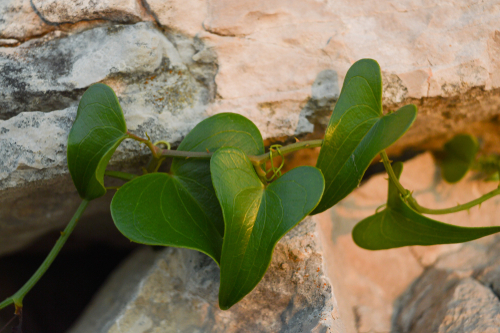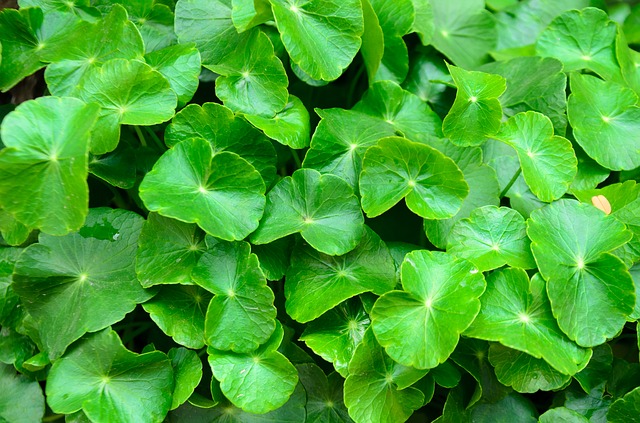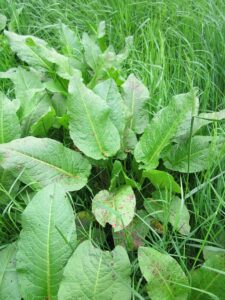A prepper knows that extreme changes can happen when you least expect them. Conditions might be the stark opposite of what you’ve been preparing for, and they may leave you with almost nothing. Yes, there can be circumstances when your years of preparation may seem insufficient. There can be incidents when people (yes, even preppers) have to leave their place in a hurry and are unable to take their bug-out bag or any edibles with them—and hence their preparations seem to be in vain. So, what if your house catches fire or a sudden invasion leaves you with no choice but to bug out and survive out in the open, without anything to eat or drink? In a SHTF situation such as this, your local stores could run out of goods in no time.
So, one must know the options Mother Nature has for you, and whether or not they are safe to eat. Here’s a guide to help you learn about some freely available food sources that are either safe to eat as they are or can be made safe to eat. Read all the way to the end if you don’t want to miss out on some great foraging on plants and weeds that can easily be found growing in urban areas.
What Edible Plants Can You Find in an Urban Setting?
It’s not necessary that you get stranded on an island in a wild forest in order for foraging to become a valuable skill. There are many possibilities that could lead to people being in need of food and water right in the areas where they already live. Yes, entirely urban settings. I’m not suggesting that you shouldn’t have your bug-out bag ready or that you should stop storing food. But you should also know about your options if Plan A—which includes a survival bag and survival food storage—fails. If your local stores and your own storage options leave you with no food to survive on, you should know about these few edible plants that can probably be found growing right in your neighborhood.
It’s not necessary that you get stranded on an island in a wild forest but there are possibilities of people getting stuck with no food or water in areas they already live—yes, entirely urban settings. Not that we’re suggesting that you shouldn’t have your bug out bag ready or should stop storing food but you should also know about your options if plan A, which includes a survival bag and survival food storage, fails. So if your local store and your own storage options leave you with nothing to survive. Here are a few edible plants, growing in your neighborhood.
Catbrier
Catbrier, or smilax, is an edible plant whose shoots, roots, and leaves can all be eaten. The plant is quite prevalent in many urban areas and contains valuable nutrition to help you survive for days. Some species produce blue-black berries. The berries of some species are considered edible, but the seeds are not. To identify catbrier, just look for vines that have both tendrils and thorns. The tender portions of this vine, which are easily snapped, can be eaten either raw or cooked. However, some people have reported experiencing a sour stomach after eating the plant raw, so it’s better to lightly cook or steam the shoots and leaves before eating. The roots are a good source of calories and nutrition, and the leaves can be served like spinach.
Warning: Catbrier is similar in appearance to Cocculus carolinus, the snailseed vine or Carolina snail vine, which has toxic foliage and berries. To differentiate, note that the snailseed vine does not bear thorns, and produces red berries.
Dollar Weed
This coin-like plant, which can be found growing in lawns and gardens, is quite edible. Dollar weed, or pennywort, is widely despised by homeowners who are irritated by its excessive growth and invasive nature. Little do these people know that these “annoying” plants are quite close to celery in terms of taste, and the leaves can be served as a raw or cooked delicacy if SHTF. Dollar weed is a close cousin of Gotu Kola, which is widely known for its use in traditional Asian cooking and medicine. If you consume dollar weed, make sure you wash it thoroughly to avoid the risk of ingesting herbicides that are widely used to control this plant in lawns and gardens.
Dock
Many species and varieties of this weed, known as dock or rumex, are commonly sighted in urban areas. Its leaves grow abundantly in spring and are perfectly safe to eat. If you’re eating them raw, you might suffer from a gag reflex at first because of the bitter and harsh taste. Therefore, it is suggested that you don’t eat this weed in large portions. If it is possible, cook the leaves a little, like you would spinach or any other leafy greens, so as to minimize the bitter taste.
In closing, don’t just rely on the most commonly known practices for survival—always keep exploring for more options. A true and smart prepper knows that his or her plan can always backfire, and so there should be a Plan B in place to help increase your chances for survival.
What Do You Think?
Know of other edible plants that are readily available in urban areas? Let us know in the the comments below!
________________
(This is an updated version of an article that was originally published on December 5, 2015.)
Psst! Our Lawyer Wants You to Read This Big, Bad Medical Disclaimer –> The contents of this article, made available via The Grow Network (TGN), are for informational purposes only and do not constitute medical advice; the content is not intended to be a substitute for professional medical advice, diagnosis, or treatment. Always seek the advice of a qualified health care provider with any questions you may have regarding a medical condition. If you think you may be suffering from any medical condition, you should seek immediate medical attention. You should never delay seeking medical advice, disregard medical advice, or discontinue medical treatment because of information provided by TGN. Reliance on any information provided by this article is solely at your own risk. And, of course, never eat a wild plant without first checking with a local expert.










COMMENTS(15)
I just learned about dollar weed last weekend as it seems to love growing around my yard, especially around my Koi Pond. Going to harvest some for tonight’s dinner…
2 that are also prevalent in many places are dandelion and plantain. Plantain is also has medicinal uses, but both can be eaten raw when needed.
Not a weed, but pine needles are edible too. (Also spruce and fir needles.) They are very high in vitamin C, which is excellent for helping to stave off infections (and keep up good health). If you live in a cold, snowy area without access to fruit in an emergency, pine trees are usually common. You can boil the needles for a few minutes to make an herbal tea if munching on a bunch of needles doesn’t sound appealing. This tea is also a nice drink to get into the winter holiday spirit with because it makes the kitchen smell like pine trees.
Dandelions grow in most urban settings. They are easily recognized and offer both medicinal and nutritional benefits. The roots, stems, leaves and flowers are all edible. Do yourself and posterity a favor and help scatter the seeds from the “wishing puff” seed head. As mentioned for dollar weed, be sure to wash off the toxins which have been sprayed on them before ingesting.
Thanks for the ideas, James! I thought you would have fun kowing that a couple of days ago on the way to “feeding” my compost pile, I needed to level out an area in front of my garden gate. We leave it open during the winter. In Zone 3, the snow can pile up 4 or 5 feet high, which would make it hard to get to areas I use all year long. So I clip the gate open, shovel right past it and occasionally have to level the gate path out by cutting the grass! Leveling this week involved scraping off a 2 inch layer of snow and shaving off 4 or 5 inches of grass. We have had unusually mild weather with a good number of nights in the 20’s and a few near or a little below below 10F. The invincible grass in my garden grows all year long. In deepest winter it never dies, just grows very slowly under the snow! To my surprise this week I clipped some wild strawberry stems and leaves that still had a little green, and dandelion leaves that were bright green. At that moment I wasn’t thinking of salad, but should the desire strike, it is nice to know it’s worth a look under the snow most any time of year. I have also found forgotten onions still alive and growing in early spring after a good number of -35F nights in Jan. and Feb., so those could also be a winter salad ingredient. For those of you who live in balmier areas, I can tell you that when I gardened in Madison, a Zone 5 area, I could find plantain and that dratted creeping jenny under the snow. Both are edible, but may be a bit tough and intense in flavor. I think nest year I will mark spots where I can find salsify and burdock roots under the snow for a change-of-pace dinner.
Sandy, that grass that never stops growing even under the snow – one woman wrote that “all grasses are edible but you can’t swallow them because humans can’t digest the cellulose. So why chew on them? Because grasses have every kind of protein known to man.
Thank you for this! What climate zone are these three good plants found in, James Smith? I live in Victoria, British Columbia, North-West from Seattle and across the Strait from the Olympic Mountains. We are zone 7 or 8. I can’t remember seeing any of these plants. One plant that grows wild in certain places, here, but only in the spring, is “miner’s lettuce” (claytonia perfoliata). Another thought is: for “when the crisis hits”, in the hope that one can retrieve one’s containers (perhaps stored in a garden shed, or solid-colour plastic bin outside?), I dehydrate stinging nettle, kale, broccoli leaves, collard greens, mustard greens, sage, oregano, rosemary, several types of mint, and thyme, all of which can be made into soup as needed. I also store some crystal salt there, too. Looking forward to learning more here!
How do you dehydrate and then store your kale?
I’m fascinated with the idea of EATING WEEDS.Purselane was my father’s most hated weed. I read I could be eaten so I ate it. I like it as a garnish on creamed potatoes and in green salads. I also love green salads with wild violet leaves (vitamin A galore) and the little violet flowers. I have successfully grown both of these on my shady balcony. Now I’m trying to see if I can keep them alive through the winter in my Nashville house. The seeds are edible so I just save them and then sprinkle them on something…even ice cream. I’m afraid to eat the onion looking things that smell exactly like onions because I read there is another look-alike in Nashville that is very poisonous. My Korean friend saw a branch from a pine tree in my home at Christmas. She said Korean people put the pine needles in boiling water under a steamer and cook rice above the pine needles. It smells good and is supposed to be good for your health.
Dear James:
very informative article. Around where i live Kudzu is prolific it abounds every where. I have found out it is edible cooked like spinach or collards, also poke weed but it must be drained 3 times while cooking.
Great articles..I’m quite interested in f I raging and self sustaining practices ?
You’re speaking my language.
I learned something today! I didn’t think catbrier had ANY redeeming qualities!!
I just read an article yesterday that baking soda is the best thing to get pesticides off of plants. Another great reason to stock up on Baking Soda. The article is right here: https://realfarmacy.com/scientists-test-these-three-solutions-for-cleaning-pesticides-off-produce-and-the-winner-is-clear/?fbclid=IwAR2m23C7Cn_8YHVjO88yWvn211CeWPcxrZujkxkAxJslLiAk9-GDWZyf0uE
► You state, “…If you consume dollar weed, make sure you wash it thoroughly to avoid the risk of ingesting herbicides…”
► Most surface pesticides can be removed from foods that have protected skins such as apples with washing. However, it would also require long soaking and an additive, such as sodium bicarbonate. Unfortunately, even if done properly, it will not do much for what is known to have penetrated the skin’s surface. And that’s for a toxin that isn’t designed to be absorbed by the plant. Albeit, there are some pesticides that are nontoxic and are perfectly safe to consume.
► For a toxin that is designed to be absorbed by the plant, such as Roundup and other herbicides, where the toxins are concentrated within the plant’s tissues, it defies common sense, that those toxins can be magically washed out. FYI, this is why cardboard contains roundup and other toxins and should not be used in a garden. Straw can also be seriously contaminated.
► You are correct that those toxins should be avoided, but that requires that you avoid plants with those toxins. For toxins that you can’t avoid, the use of activated charcoal from your survivalist pack will neutralize most.
► A side note for consumers of conventional foods. Farmers will often try to wash the surface pesticides from their produce with other toxins that ironically are quickly absorbed into the plant’s tissues. They do not use sodium bicarbonate, which is non-toxic and inexpensive.